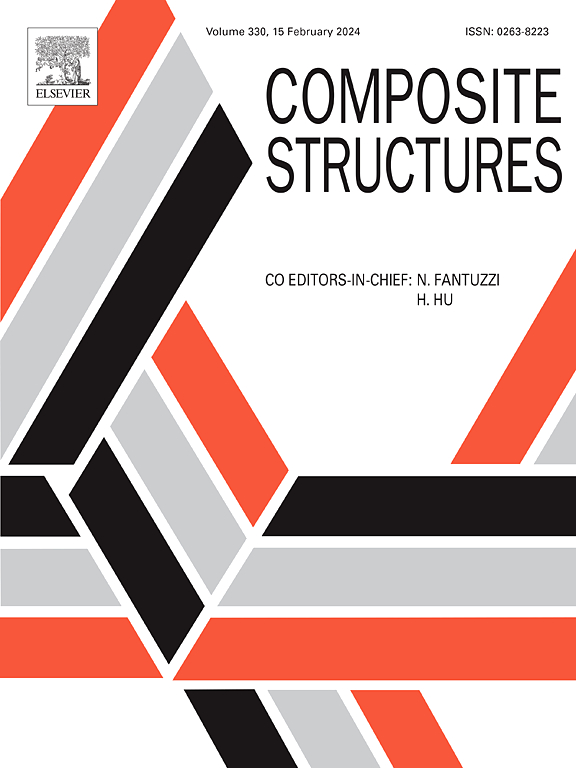Flexible N-layer composite beam/column elements with interlayer partial interaction imperfection–A novel approach to structural stability and dynamic analyses
IF 6.3
2区 材料科学
Q1 MATERIALS SCIENCE, COMPOSITES
引用次数: 0
Abstract
Existing vibration and buckling analysis models for the partial-composite beam/column elements are restricted to a limited number of constituting layers. This is due to the escalated complexity of the governing equations with an increase in the number of layers. The present study formulates the stability and vibration problems of columns and beams composed of any number of identical constituting layers, incorporating the effects of interlayer partial-interaction imperfection. A Timoshenko/Engesser-hypothesis-based partial-composite (TEPC) model is developed and a novel analytical solution scheme is implemented into the extracted governing differential equations. As a result, efficient conversion coefficients are introduced, converting the well-known classical Euler column buckling and beam vibration formulae to those of multilayer elements having interlayer partial-interaction imperfection based on the TEPC model. The validity of the proposed approach is verified through comparison with available experimental data and the conducted 3-D FEA. It is shown that the most significant reduction in the predicted buckling capacity of partial-composite multilayer columns, when transitioning from the EBPC model to TEPC, occurs for the columns with the highest interlayer interaction. Furthermore, it is shown that the influence of interlayer interaction level on the Euler-to-Timoshenko/Engesser conversion coefficients becomes less pronounced as the number of constituting layers increases.
具有层间部分相互作用缺陷的柔性n层组合梁/柱单元——结构稳定性和动力分析的新方法
现有梁柱局部组合单元的振动和屈曲分析模型仅限于有限的构成层数。这是由于控制方程的复杂性随着层数的增加而升级。考虑层间部分相互作用缺陷的影响,本研究提出了由任意数目的相同构成层组成的柱和梁的稳定性和振动问题。建立了基于Timoshenko/ engesser -假设的部分复合(TEPC)模型,并对提取的控制微分方程实现了新的解析解格式。在此基础上,引入了有效的转换系数,将经典的欧拉柱屈曲和梁振动公式转化为基于TEPC模型的具有层间部分相互作用缺陷的多层单元的振动公式。通过与已有实验数据和三维有限元分析的对比,验证了该方法的有效性。结果表明,当部分复合材料多层柱的屈曲能力从EBPC模型过渡到TEPC模型时,层间相互作用最大的柱的屈曲能力下降最为显著。此外,层间相互作用水平对Euler-to-Timoshenko/Engesser转换系数的影响随着构成层数的增加而减弱。
本文章由计算机程序翻译,如有差异,请以英文原文为准。
求助全文
约1分钟内获得全文
求助全文
来源期刊

Composite Structures
工程技术-材料科学:复合
CiteScore
12.00
自引率
12.70%
发文量
1246
审稿时长
78 days
期刊介绍:
The past few decades have seen outstanding advances in the use of composite materials in structural applications. There can be little doubt that, within engineering circles, composites have revolutionised traditional design concepts and made possible an unparalleled range of new and exciting possibilities as viable materials for construction. Composite Structures, an International Journal, disseminates knowledge between users, manufacturers, designers and researchers involved in structures or structural components manufactured using composite materials.
The journal publishes papers which contribute to knowledge in the use of composite materials in engineering structures. Papers deal with design, research and development studies, experimental investigations, theoretical analysis and fabrication techniques relevant to the application of composites in load-bearing components for assemblies, ranging from individual components such as plates and shells to complete composite structures.
 求助内容:
求助内容: 应助结果提醒方式:
应助结果提醒方式:


